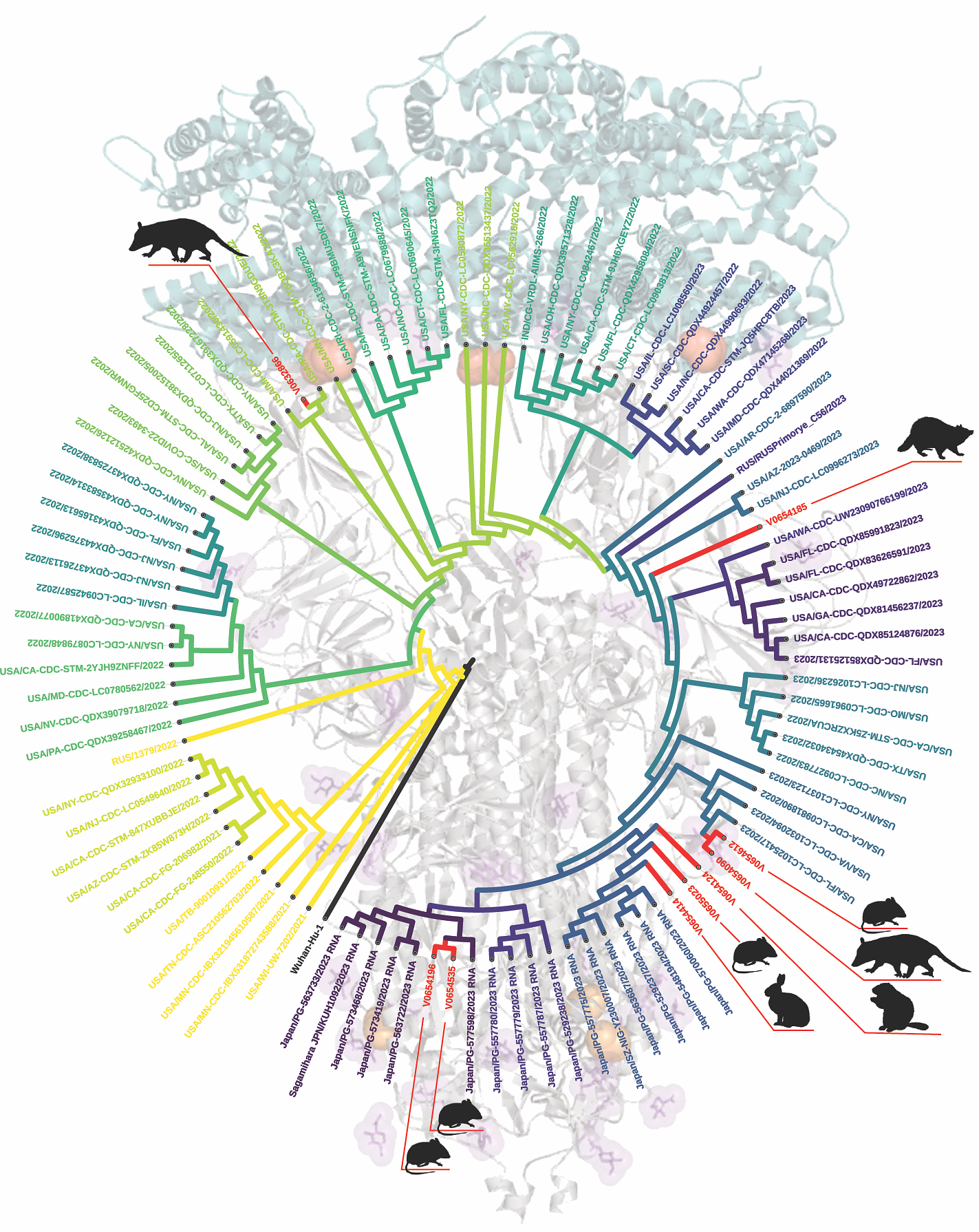With rising case numbers, COVID-19 seems to be everywhere right now. But did you know the virus might also be literally lurking in your back yard? A new study from scientists at Virginia Tech found SARS-CoV-2 in six of Virginia’s most recognizable animal species, many of which can be found across the United States.
We’ve known for a while that a COVID-afflicted human can pose a risk to their pets. Two domestic cats were the first pets to test positive for the virus in the US way back in early 2020, and the most recent guidance from the Centers for Disease Control and Prevention (CDC) suggests that dogs, hamsters, and ferrets could also be at risk.
Numerous wild species and others held in zoos and sanctuaries have also been reported to be infected, leading the team at Virginia Tech to question just how widespread this virus could be within the local fauna.
“This study was really motivated by seeing a large, important gap in our knowledge about SARS-CoV-2 transmission in a broader wildlife community,” explained Assistant Professor of Biological Sciences Joseph Hoyt, one of the corresponding authors, in a statement.
They sampled 23 species and detected SARS-CoV-2 RNA in six of them: the deer mouse, Virginia opossum, raccoon, groundhog, Eastern cottontail rabbit, and Eastern red bat. A total of 798 nasal and oral swabs were collected between May 2022 and September 2023, from either wild-caught animals that were later released or animals that were being treated in rehabilitation centers. A further 126 blood samples were also collected from six species.
The researchers wanted to compare animals found in areas with different levels of human contact, from remote rural locations to right in our back yards. The data suggests that the virus has spread into wildlife populations in places with high human activity.
“The virus can jump from humans to wildlife when we are in contact with them, like a hitchhiker switching rides to a new, more suitable host,” said co-corresponding author and Professor of Biological Sciences Carla Finkielstein. “The goal of the virus is to spread in order to survive. The virus aims to infect more humans, but vaccinations protect many humans. So, the virus turns to animals, adapting and mutating to thrive in the new hosts.”
We often speak about the risks of viruses spilling over from animals into the human population – not least when discussing the origins of COVID itself – but rarely do we stop to think about the opposite scenario. A recent study found that viruses jump from humans to animals more often than the other way round, and now this data is showing that we have helped spread SARS-CoV-2 into more animal species than we might think.
“I think the big take home message is the virus is pretty ubiquitous,” said first author Amanda Goldberg.
It’s not clear exactly how the animals caught the infection from humans, but the authors believe that garbage and discarded food are the most likely sources. Two of the mice sampled from the same location on the same day during the study were found to be infected with the exact same variant of the virus, meaning they either caught it from the same human or one infected the other.
Understanding how the virus is spreading in different animal populations is important to gain a more detailed picture of how it is evolving. How might it be spreading from one species to another? Which wild species might serve as reservoirs for human-pathogenic strains?
The black “root” of this evolutionary tree is the original Wuhan SARS-CoV-2 sequence isolated at the end of 2019. Arranged on the tree are 90 different virus sequences isolated in humans since then, and highlighted in red are nine wild animal isolates from species included in this study.
Image credit: figure courtesy of Carla Finkielstein/Virginia Tech
“We understood the critical importance of sequencing the genome of the virus infecting those species,” said Finkielstein, praising the work of the multidisciplinary team who came together for this study. One result, from an opossum, revealed virus mutations that have previously been unreported, underlining the wealth of useful data that these types of studies can provide.
Finkielstein said, “The virus is indifferent to whether its host walks on two legs or four. Its primary objective is survival,” adding that “SARS-CoV-2 is not only a human problem.”
The study is published in Nature Communications.
Source Link: COVID-19 Virus Found In 6 Backyard Animals – And Humans Are The Cause
